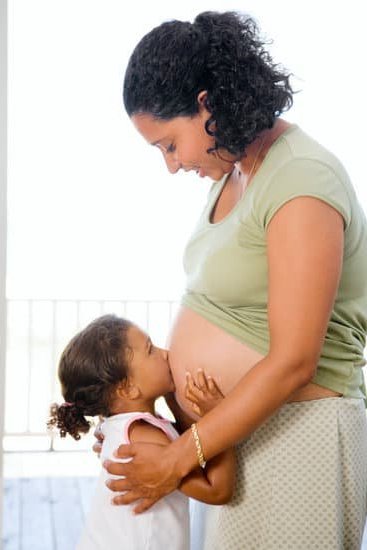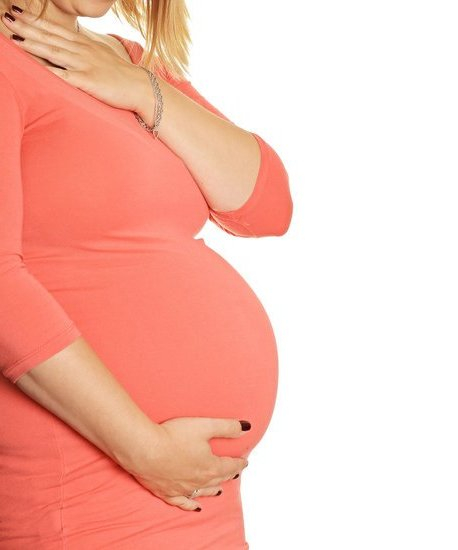Are you experiencing unusual symptoms and wondering if it’s PMS or pregnancy? Understanding the difference between PMS and pregnancy symptoms is crucial for managing your reproductive health. Many symptoms overlap, but knowing the signs can help you differentiate between the two.
In this article, we will explore the common signs and symptoms of premenstrual syndrome (PMS) and early pregnancy, and discuss how they differ. We will also provide guidance on when to take a pregnancy test and seek professional advice.
Premenstrual syndrome (PMS) affects many women, causing physical and emotional changes before their period. It is essential to recognize these symptoms in order to differentiate them from early pregnancy signs. Both PMS and early pregnancy can include physical discomfort such as bloating, breast tenderness, and fatigue, making it easy to mistake one for the other.
Emotional changes like mood swings and irritability also add to the confusion between the two conditions. By understanding these differences, you can navigate your reproductive health more effectively.
It’s crucial to address the timing of symptoms and how they may indicate whether it’s PMS or early pregnancy. Additionally, we will discuss spotting vs implantation bleeding – another key factor in determining if you’re experiencing PMS or early signs of pregnancy. By understanding these distinctions, you can gain clarity on whether it’s time to take a pregnancy test or consult a healthcare professional for accurate results.
PMS Symptoms
Premenstrual Syndrome (PMS) refers to the physical and emotional symptoms that many women experience in the days leading up to their menstrual period. These symptoms can vary from mild to severe and can significantly impact a woman’s daily life. Understanding the common signs and symptoms of PMS can help individuals differentiate between PMS and early pregnancy symptoms.
Common PMS Symptoms
When it comes to PMS, the symptoms can manifest in various ways, affecting both physical and emotional well-being. Here are some common signs and symptoms of PMS:
- Abdominal bloating
- Breast tenderness
- Cravings for certain foods
- Fatigue
- Headaches
- Irritability
- Mood swings
- Acne
These symptoms typically occur in the days leading up to menstruation and subside once the period begins. However, they can vary widely from woman to woman, both in terms of severity and specific symptoms experienced.
Differentiating Between PMS Symptoms and Early Pregnancy Symptoms
Differentiating between PMS and early pregnancy symptoms can be challenging, as there is some overlap between the two. For example, fatigue, breast tenderness, mood swings, and food cravings can be present in both cases. However, there are also key differences that can help distinguish between the two.
Understanding these differences is crucial for those trying to conceive or simply wanting to stay informed about their reproductive health. Consulting a healthcare professional for personalized guidance is recommended if there is uncertainty regarding whether the symptoms experienced are related to PMS or potential pregnancy.
Pregnancy Symptoms
Early Signs of Pregnancy
One of the earliest signs of pregnancy is a missed period, which can often be the first indicator that a woman may be pregnant. However, there are other early symptoms that can also point to pregnancy. These include nausea or morning sickness, increased sensitivity to certain smells, frequent urination, and heightened fatigue. It’s important to note that these symptoms can vary from woman to woman and may not always be present in every pregnancy.
Distinguishing Pregnancy Symptoms From PMS
While many of the symptoms of early pregnancy can overlap with those of premenstrual syndrome (PMS), there are some key differences to look out for. For example, breast tenderness is common in both PMS and early pregnancy, but it may occur more intensely in the case of pregnancy. Additionally, the timing and duration of symptoms can help differentiate between PMS and pregnancy – PMS symptoms typically subside once menstruation begins, while pregnancy symptoms may continue or even intensify.
Seeking Confirmation
If a woman suspects she may be pregnant based on her symptoms, it is advisable for her to take a home pregnancy test to confirm. These tests work by detecting the presence of human chorionic gonadotropin (hCG) in urine – a hormone produced during early stages of pregnancy. If the test is positive or if there is uncertainty about the results, it is recommended for the individual to consult a healthcare professional for further evaluation.
Understanding the differences between PMS and pregnancy symptoms is important for women who are trying to conceive or who are concerned about potential pregnancies. By being aware of these distinctions, individuals can make informed decisions about their reproductive health and seek appropriate care when needed.
Physical Symptoms
When comparing the physical symptoms of PMS and pregnancy, it is important to note that there can be some overlap, making it challenging for individuals to differentiate between the two. Bloating is a common physical symptom of both PMS and early pregnancy. Many women experience bloating in the days leading up to their period as well as during the early stages of pregnancy. This can make it difficult to determine the cause of bloating without considering other symptoms.
Breast tenderness is another physical symptom that can occur during both PMS and pregnancy. The hormonal fluctuations that occur during the menstrual cycle can lead to breast tenderness and sensitivity, which is also a common early sign of pregnancy. It’s essential to pay attention to any changes in breast tenderness, such as increased sensitivity or changes in texture, which may indicate pregnancy rather than PMS.
Fatigue is a symptom that many women experience before their period due to hormonal changes and increased stress levels. However, fatigue can also be an early indicator of pregnancy, especially during the first trimester when a woman’s body is undergoing significant changes.
It’s important to consider other symptoms such as nausea, frequent urination, or a missed period if fatigue is present to determine whether it may be related to pregnancy rather than PMS. Understanding these differences in physical symptoms will help individuals better recognize the signs of either condition.
Overall, while there are similarities in physical symptoms between PMS and early pregnancy, paying attention to the timing and severity of these symptoms can help differentiate between the two. Additionally, being mindful of emotional symptoms and any unusual changes in the body can provide further insight into whether these physical symptoms are related to PMS or possible pregnancy.
Emotional Symptoms
During both PMS and early pregnancy, women may experience emotional changes that can significantly impact their daily lives. Understanding the differences in these emotional symptoms can help individuals differentiate between premenstrual syndrome and potential pregnancy. Here are some of the emotional symptoms experienced during PMS and early pregnancy:
1. Mood Swings: One of the hallmark signs of both PMS and early pregnancy is mood swings. Women may find themselves feeling irritable, anxious, or weepy during these times. However, the intensity and duration of these mood swings can vary between the two conditions.
2. Irritability: Feeling easily annoyed or agitated is also a common symptom during PMS and early pregnancy. It’s important to note that while irritability is present in both scenarios, it may be more pronounced in one versus the other.
3. Emotional Sensitivity: Heightened emotional sensitivity can occur during both PMS and early pregnancy. Women may find themselves more prone to feeling overwhelmed or experiencing intense emotions during routine activities.
The differentiation between emotional symptoms of PMS and those related to early pregnancy can be challenging due to their similarities. However, understanding the subtle differences in intensity, duration, and timing of these emotions can help individuals determine whether they are experiencing PMS or if they should consider taking a pregnancy test.
Ultimately, consulting with a healthcare professional is recommended for personalized guidance on managing emotional symptoms associated with both PMS and early pregnancy. If unsure about the cause of these emotional changes, seeking medical advice can provide clarity and peace of mind.
Timing
When it comes to differentiating between PMS symptoms and pregnancy symptoms, timing can be crucial. Understanding the timing of these symptoms can provide valuable insight into whether you are experiencing premenstrual syndrome or early pregnancy.
PMS Timing
Premenstrual syndrome typically occurs in the days leading up to your period. These symptoms often start one to two weeks before menstruation begins and generally subside once your period arrives. This means that if you are experiencing symptoms like bloating, breast tenderness, and mood swings right before your period is due, it is likely due to PMS.
Pregnancy Timing
On the other hand, early pregnancy symptoms may also occur around the time your period is expected but could be slightly different. For example, implantation bleeding, which can occur when the fertilized egg attaches to the uterine lining, typically happens around 10 to 14 days after conception – right around the time of an expected period. Other early signs of pregnancy, such as nausea and vomiting (morning sickness), can start as early as a few weeks after conception.
It’s important to note that every woman’s cycle is unique, so while timing can help differentiate between PMS and early pregnancy, it’s not a foolproof method. If you suspect that you may be pregnant or if your symptoms are causing concern, it’s always best to consult with a healthcare professional for proper evaluation and guidance on next steps.
Spotting vs Implantation Bleeding
Spotting and implantation bleeding are both common occurrences that can cause confusion for women who are trying to determine if they are experiencing PMS symptoms or early pregnancy symptoms. Spotting refers to light, irregular bleeding that may occur before or after a woman’s period and can be a normal part of the menstrual cycle for some women.
On the other hand, implantation bleeding is one of the early signs of pregnancy and happens when the fertilized egg attaches to the lining of the uterus.
Spotting before a period typically occurs in the days leading up to menstruation and is often lighter in flow than a regular period. This type of spotting is caused by fluctuations in hormone levels and shedding of the uterine lining. It can be accompanied by mild cramping, similar to menstrual cramps, and usually resolves once the period begins.
Implantation bleeding, on the other hand, occurs around 10-14 days after conception when the embryo implants into the uterine wall. It is often light pink or brown in color and much lighter than a regular period. Some women may mistake it for spotting before their period because it can occur around the time when their period is expected. However, implantation bleeding typically lasts for a shorter duration – usually only a day or two – compared to a regular period.
Differentiating between spotting before a period and implantation bleeding can be challenging because they share some similar characteristics. However, understanding these differences can help women determine whether they may be experiencing PMS symptoms or if they could potentially be pregnant. If you experience unusual bleeding or have concerns about your menstrual cycle, it’s important to consult with your healthcare provider for personalized guidance and support.
When to Take a Test
When it comes to differentiating between PMS symptoms and pregnancy symptoms, timing is crucial. Knowing when to take a pregnancy test can help provide accurate results and avoid unnecessary confusion. If you suspect you may be pregnant, it’s important to understand when the best time is to take a test and when to seek the guidance of a healthcare professional.
For most accurate results, it’s recommended to take a pregnancy test after you have missed your period. Testing too early can result in a false negative, as the levels of hCG (human chorionic gonadotropin) may not be high enough to be detected by the test.
However, some tests on the market claim to detect pregnancies several days before a missed period. These early detection tests are able to measure lower levels of hCG, but they may still not provide accurate results until after your missed period.
If you have irregular periods or are unsure about when your next period is due, it may be best to wait at least one week after unprotected sex before taking a pregnancy test. This ensures that there is sufficient time for hCG levels to rise if you are indeed pregnant.
It’s also important to remember that while home pregnancy tests are convenient and readily available, consulting with a healthcare professional can provide more accurate results through blood tests and ultrasounds. If you receive conflicting results from home tests or are experiencing unusual symptoms, seeking the guidance of a doctor or healthcare provider is recommended for further evaluation.
| When to Take a Test | Guidance |
|---|---|
| After missed period | Most accurate results |
| Irregular periods or unsure dates | Wait at least one week after unprotected sex |
| Consulting healthcare professional | If experiencing conflicting results or unusual symptoms |
Conclusion
In conclusion, it is essential to understand the distinction between PMS and pregnancy symptoms to effectively manage and address these experiences. Both premenstrual syndrome (PMS) and early pregnancy share common physical and emotional symptoms, including bloating, breast tenderness, mood swings, and fatigue. However, recognizing the subtle differences in timing and specific signs can help individuals determine whether they are experiencing PMS or potential early pregnancy.
For individuals experiencing uncertainty about their symptoms, it is crucial to consult a healthcare professional for accurate guidance and support. It is common for women to mistake PMS for early pregnancy or vice versa due to the similarities in symptoms. Therefore, taking a pregnancy test or seeking medical advice can provide clarity and peace of mind.
Navigating the complexities of PMS symptoms vs pregnancy symptoms can be challenging for many individuals. By being informed about the key differences discussed in this article and seeking appropriate medical advice when necessary, individuals can better manage their reproductive health and make informed decisions moving forward. It is important to remember that every person’s experience may vary, and there is no one-size-fits-all approach when it comes to understanding and addressing these physical and emotional changes.
Frequently Asked Questions
How Do You Know if Your Period Is Coming or Your Pregnant?
Knowing whether your period is coming or if you’re pregnant can be tricky because some early pregnancy symptoms mimic premenstrual signs. Typical signs of pregnancy include missed periods, breast tenderness, fatigue, and nausea. Taking a home pregnancy test is the most accurate way to confirm.
Can PMS Symptoms Be Mistaken for Pregnancy?
PMS symptoms and early pregnancy symptoms can overlap, leading to confusion. Both can cause mood swings, tender breasts, bloating, and fatigue. However, PMS doesn’t typically cause nausea or vomiting like early pregnancy does. It’s best to take a pregnancy test if there’s any doubt.
How Soon Do Early Pregnancy Symptoms Start?
Early pregnancy symptoms can start as soon as a week after conception. Some of the earliest signs include implantation bleeding, cramping, frequent urination, and heightened sense of smell. Every woman is different though; some may experience these symptoms earlier or later than others.

Welcome to my fertility blog. This is a space where I will be sharing my experiences as I navigate through the world of fertility treatments, as well as provide information and resources about fertility and pregnancy.





